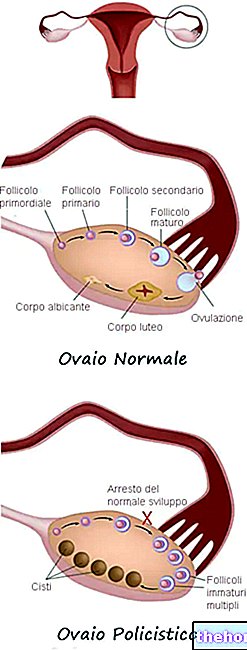Edited by Dr. Giovanna Taranto
PEAK BONE MASS (BMD) ACHIEVEMENT
The peak of bone mass that a woman reaches during her lifetime occurs at the end of puberty up to the age of 30, after which it begins to decrease until the onset of menopause, at which time the decrease increases exponentially up to the age of 60. about, to then resume a slow but steady descent.
The higher the BMD peak, the longer it will take, with the onset of menopause, to become part of the high fracture risk group. Therefore it is important that during childhood and puberty the young woman maintains the conditions of health, nutrition etc. such as to reach the highest possible peak in bone density, also in relation to the genetic determinant.
In young athletes engaged in high-level sports, which require a great deal of physical and psychological effort to achieve the desired results, it is easy for the age of the menarche to move forward, and a delayed menarche can have negative effects on bone density. jeopardizing the achievement of peak bone mass. If, moreover, protracted imbalances of the reproductive axis are added, bone density decreases to pathological values and a high risk of stress fractures.
An inadequate turnover of bone tissue, also regulated by Estrogen, leads to a decrease in bone density (BMD: Bone Mineral Density) and, consequently, to disorders such as Osteopenia (Decrease in bone density compared to the norm with a T-score from -1DS to -2.5 SD) * and Osteporosis (more severe decrease in bone density with a T-score> -2.5 SD).

Fig. 3: the image shows a decrease in the trabeculae of the bone tissue between a normal subject and one with decreased BMD **
* T-Score: bone density index of the woman examined compared to the average of a reference population at a young age and not affected by pathologies.
SD = standard deviation
** Bone Mineral Density: bone density
HOW CAN YOU "INTERVENE?
Recognizing the signs and symptoms as early as possible is the key to minimizing damage.
The role of the people closest to the "athlete" in identifying the first symptoms and intervening with psychological support, perhaps on the advice of the family doctor, is fundamental.
In case of more advanced disorders, the ACSM (American College Of Sport Medicine) recommends the increase of the caloric intake and the reduction of energy expenditure under the supervision of a nutritionist assisted by psychotherapeutic support.
In severe cases, antidepressant drugs are also used, always under strict medical supervision.
Prevention by both the teacher / coach and the family remains essential to avoid stress so severe as to cause problems related to the Triad.
BIBLIOGRAPHY
Mary Jane De Souza and Nancy I. Williams - Uman Reproduction Update, vol. 10, N ° 5, 1 July 2004 - Phisiological aspects and clinical sequelae of energy deficiency and hypoestrogenism in exercising women.
American College o f Sport Medicine - Medicine & Science in Sport & Exercise 2007 - Position Stand: The Female Athlete Triad
Tarannum Master-Hunter and Diana L. Heiman - Amenorrhea: Evaluation and Treatment - American Family Physician, vol. 73, N ° 8, April 15, 2006.
Roberta Trattner Sherman and Ron A. Thompson - Practical Use of the International Olympic Committee Medical Commission Position Stand on the Female Athlete Triad: A Case Example - I. J. Eating Disorders vol. 39, N ° 3, 2006.
Linnea R. Goodman and Michelle P. Warren - The Female Athlete and mestrual function - Current opinion in Obstetric and Gynecology 2005, vol. 17
G. Pescetto, L. De Cecco and D. Pecorari - Obstetric and gynecological clinic manual.
Ferdinando Valentini - A.M.P. Seminars 1997-1998 - The neuroendocrine response to stress.
Andrea Gallinelli, Maria Lucia Matteo, Annibale Volpe and Fabio Facchinetti - Autonomic and neuroendocrine responses to stress in patients with functional hypotalamic secondary amenorrhea - Fertility and Sterility vol. 73, N ° 4, April 2000
Yoshihito Kondoh, Tsuguo Uemura, Marico Murase, Natsuko Yokoi, Masahiko Ishikawa and Fumiki Hirahara - A longitudinal study of disturbances of the hypotalamic.pituitary-adrenal axis in women with progestin negative functional hypotalamic amenorrhea - Fertility and Sterility vol. 76, N ° 4, October 2001.
S. N. Kalantaridou, A. Makrigiannakis, E. Zuomakis, G. P. Chrousos - Stress and female reproductie system - J. Of Reprodutive Immunology vol. 62, 2004.
Michel Ferin - Stress and the reproductive Cycle - J. of Clinical Endocrinology & Metabolism 1999.
Sriareporn Punpilai, Tiansawad Sujitra, Tonmukayakul Ouyporn, Vutyavanich Teraporn and Boonyaprapa Sombut - Mestrual status and bone mineral density among female athletes - Nursing and Health Sciences vol. 7, 2005.
Michael Fredericson and Kyla Kent - Normalization of bone density in a previously amenorreic runner with osteoporosis - Medicine and science in sport and exercise 2005, Amenrican college of Sport Medicine.
Karen K. Miller and Anne Klibanski - Amenorrheic bone loss - J. of Clinical Endocrinology & Metabolism 1999.
Anne Z. Hoch, Rania L. Dempsey, Guillermo F. Carrera, Charles R. Wilson, Ellen Chen, Vanessa M. Barnabei, Paul R. Sandford, Tracey A. Ryan and David D. Gutterman - Is there an association between athletic amenorrhea and endotelial cell dysfunction? - Medicine and science in Sport and Exercise 2003 - American College of Sport Medicine.
Di Pietro, Loretta, Stachenfeld, Nina S. - The female athlete triad - William And Wilkins, vol. 29, December 1997.
Julee Waldrop, MS, RN, FNP. PNP - Early identification and interventions for female Athlet Triad - J. Pediatric Health Care.
Other articles on "Triad of" Female Athlete and Peak Bone Mass "
- Female Athlete Triad - Amenorrhea and Menstrual Disorders
- Triad of the female athlete



























